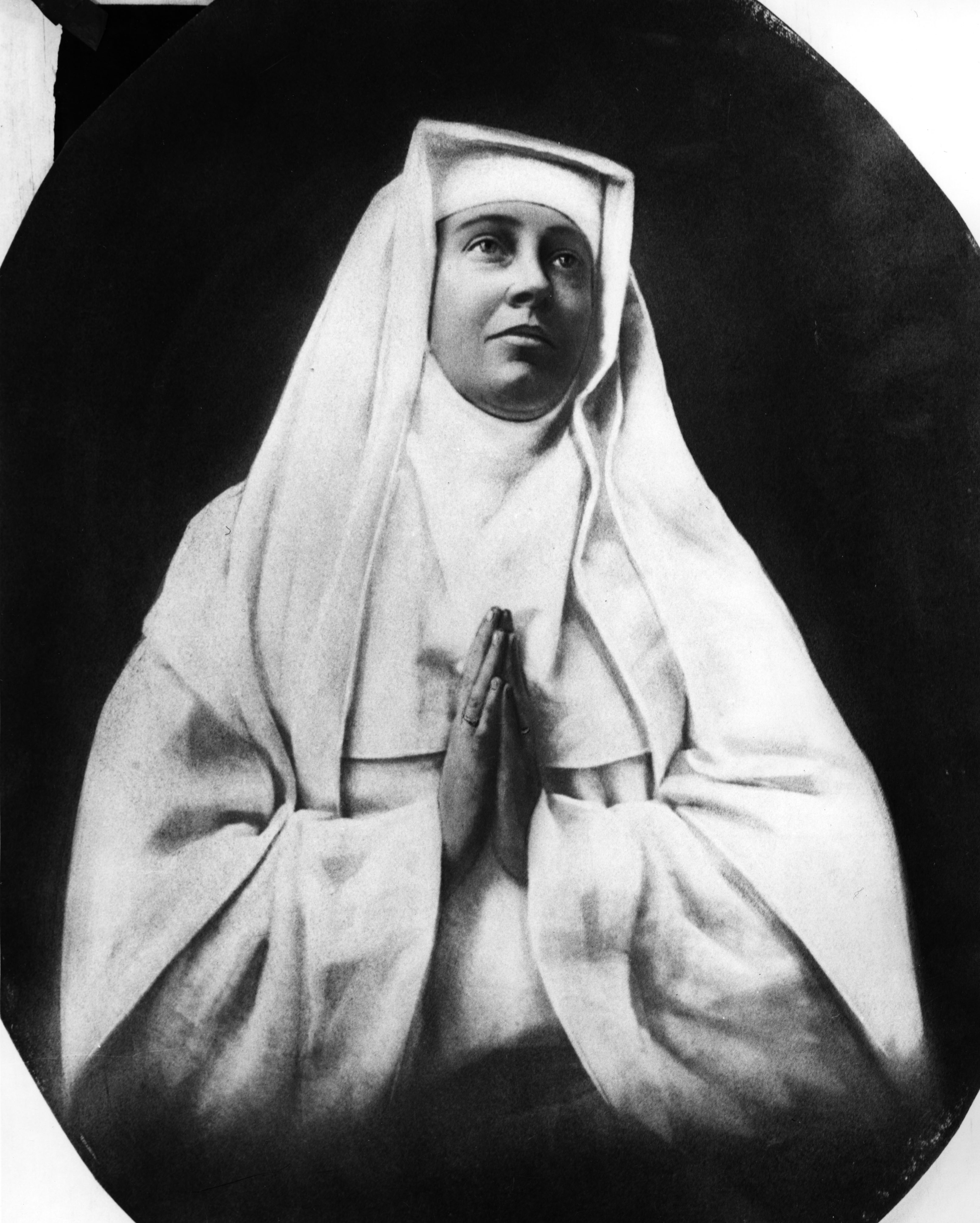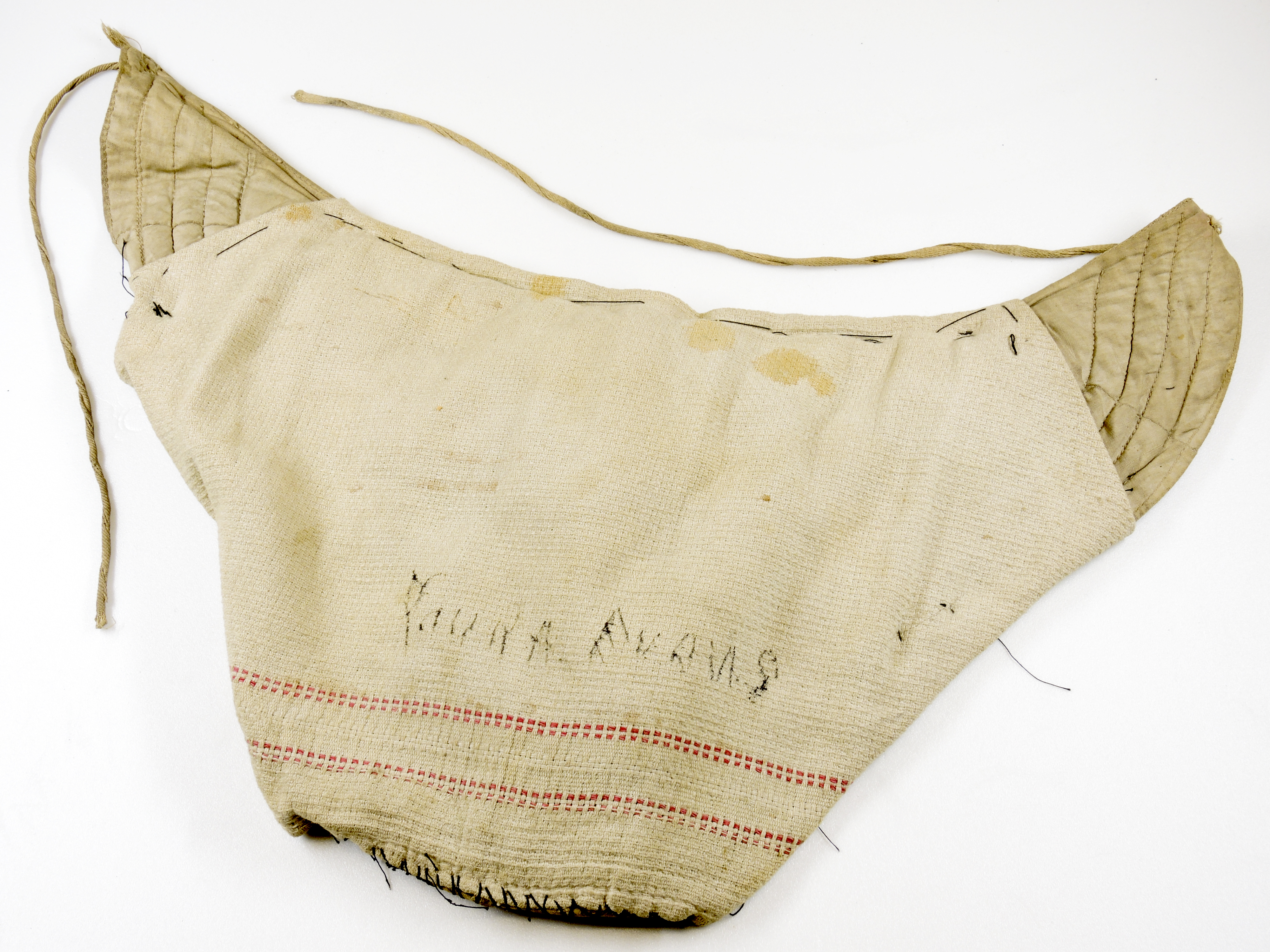Story
Hustle or Bustle: The Story of Laura Evans’ Hip Form
History Colorado has been collecting, preserving, and interpreting our state’s history for 140 years. Our first collections were stored in a rented room at the Glenarm Hotel—the building that served as the state capitol in 1879. Obviously, we’ve outgrown the Glenarm and three other locations since that time. We now manage more than 15 million photographs, documents, and artifacts. Considering the number of moves we’ve made, the number of sites and storage facilities statewide that we maintain, and the evolution of the documentation and tracking process—from cursive ledger book entries to typewritten catalog cards to computer database records—it is not surprising that an occasional artifact (or a box of them) has been separated from its provenance.
Several months ago I reviewed a box of artifacts that had been found in collections storage. None of the objects were tagged or marked with an accession number, meaning they were effectively separated from their provenance. Provenance is an object’s record of ownership—its guide to authenticity and story. Without provenance artifacts are often difficult to interpret. Sometimes curators have to decide if artifacts belong in the permanent collection, or if not where to find an appropriate home for them.
In this particular box I found, among other things, two American Legion garrison caps, two pairs of wire-rim eyeglasses, a miniature Confederate flag, a pair of garters, a packaged silicon birth control device that I will leave to your imagination to envision, and a woman’s bustle. Several things about the bustle caught my attention. For one, although almost unreadable, it had a name on it. Who puts their name on their undergarments unless they’re going to summer camp or a nursing home? More strange was the worn dishtowel sewn on its upper side forming an extra compartment, presumably for additional padding. The stitching was very crude and looked to have been done hastily. One seam had separated leaving the pouch flat and empty.
In addition to those objects, at the bottom of the box, was an envelope containing U.S. military shoulder patches, none of which we need without the stories of the soldiers who wore them. Scribbled across the front of the envelope were the words Found in the personal effects of Laura Evans. This turned out to be an important clue. The notation helped to decipher the chicken-scratch on the bustle. It was the same name: Laura Evans. The combination of these two inscriptions would lead to a wild story of Colorado’s past.
Although I wasn’t familiar with the name, I supposed Laura Evans to be a daughter or niece of John Evans, Colorado Territory’s second governor. Initially, I speculated the artifacts to have originated at the Byers-Evans House Museum, one of History Colorado’s ten museums and historic sites. Members of the Evans family lived in that house from 1889 until 1981 when they donated it to History Colorado. However, when I couldn’t find Laura Evans in their family tree, I began to doubt my previous hypothesis.
So I searched the internet. Lots of Facebook and Twitter hits: Laura Evans, a British actor, singer/songwriter; Laura Evans, a public and media relations consultant; and so on. One, however, stood out. The Salida Regional Library site displayed a photograph of an elderly woman, in a chair, rolling a cigarette. The caption described the woman as Laura Evans, Salida’s most prominent madam!!!
Alice Chapel Reed Evens a.k.a. Laura Evans (1871-1953) operated a brothel on Sackett Street in Salida for over 50 years. The well-known madam first opened her parlor house in 1896 after losing favor in Leadville, where she'd taken sides with mine owners during the miner’s strike of 1896, and crossed the picket line with a $25,000 payroll hidden in her bustle!!! That explained it all! Suddenly this box of eclectic odds and ends made sense. Except for one little detail...
In addition to Laura’s name, there is also a maker’s mark stamped on the underside of the pad. Although the ink has faded significantly, and is somewhat obscured by dirt, it appears to be marked with a patent date of March 1903. If accurate, the marking postdates the Leadville event by about seven years. Examining the ink under magnification and black light was inconclusive. It is interesting because the rest of the mark is pretty distinct and reads, “The Scott Perfect Form Fitting Invisible Hip Form and Bustle Size 0.” I began searching for patent information. According to information recorded in the January 1903 Volume 37 edition of Fabrics, Fancy Goods and Notions: A Journal for Jobbers and Retailers of Dry Goods, Fancy Goods and Notions, patent number 723,495 was issued for The Scott to Charles H. Scott in 1903!!! It is described as white cotton, reversible with quilted and grommeted construction and a simple tie closure. It could not describe our bustle more accurately.
So, it is not the bustle. But where did it come from, and why has it never been registered and numbered? Interestingly, I found another clue on the Salida library website. They’ve posted transcripts of interviews with Evans recorded in the late 1940s and early 1950s. The interviews are credited to History Colorado, and not surprisingly, conducted by Fred M. Mazzulla (1903-1981), a controversial western historian, photographer and writer. Fred Mazzulla prowled the west for nearly 50 years interviewing old timers, collecting artifacts, and writing western history booklets. He was particularly interested in vice and violent crime. Although a lawyer by trade, some of his collecting practices were questionable. Among other things, he was accused of “sticky fingers” (on both objects and other authors’ writing) and trading fake artifacts as authentic. He is quoted in the January 16, 1972 edition of Empire Magazine as saying, “I’m no stickler for historical accuracy. Sometimes it takes showmanship to make history interesting.”

Laura Evans disguised as a nun for a social event.
Mazzulla sold his Western photographic collection of over 250,000 images to the Amon Carter Museum of Western Art in 1973. In 1985 former History Colorado curator of photography Eric Paddock visited the Fort Worth museum to speak with them about the collection. Paddock’s grandfather, a photographer for the Boulder Daily Camera newspaper, had loaned Mazzulla some glass negatives that had never been returned and were now in their collection. He produced carbon copies of letters from his grandfather to Mazzulla demanding the return of the negatives. That discussion began a fourteen year crusade by Paddock that resulted in the transfer of the entire collection to History Colorado.
Although the material is primarily photographic, it also contains audio tapes, photo equipment, paintings, drawings, correspondence, diaries, legal records, clippings, scrapbooks, and other ephemera. Laura Evans claims on one of the tapes that the bustle she gave Fred Mazzulla is the one in which she smuggled the miner’s payroll. We’ll probably never know if the History Colorado bustle is the one she was referring to or if it’s a fake created by Fred Mazzulla. What we do know is this: Laura Evans’ past is remembered.


